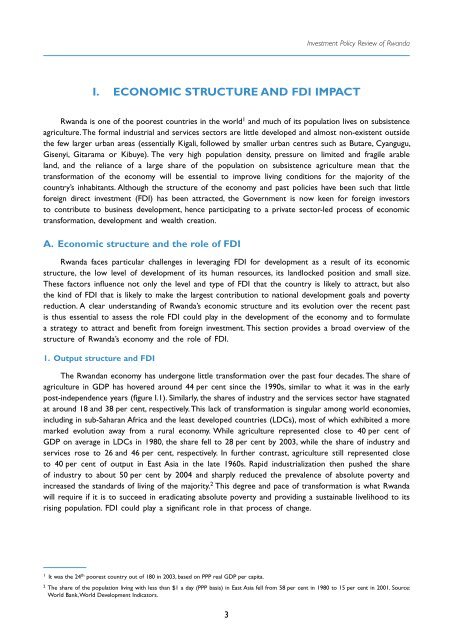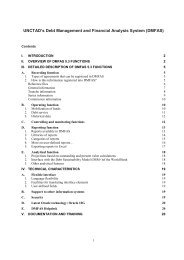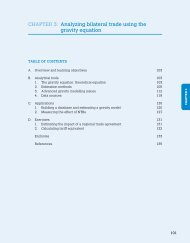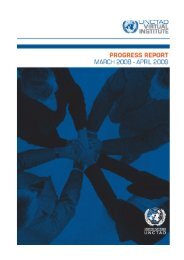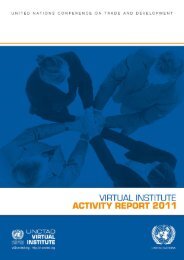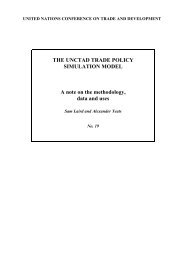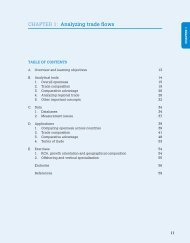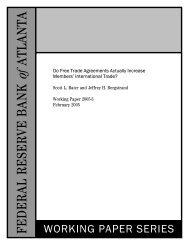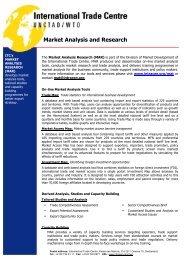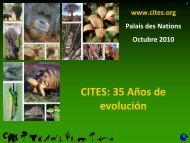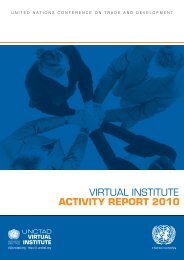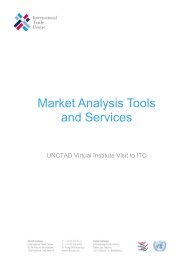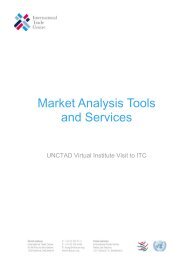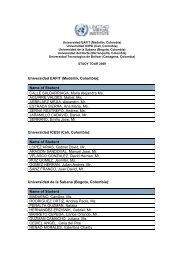Investment Policy Review - Rwanda - UNCTAD Virtual Institute
Investment Policy Review - Rwanda - UNCTAD Virtual Institute
Investment Policy Review - Rwanda - UNCTAD Virtual Institute
You also want an ePaper? Increase the reach of your titles
YUMPU automatically turns print PDFs into web optimized ePapers that Google loves.
<strong>Investment</strong> <strong>Policy</strong> <strong>Review</strong> of <strong>Rwanda</strong><br />
I. ECONOMIC STRUCTURE AND FDI IMPACT<br />
<strong>Rwanda</strong> is one of the poorest countries in the world 1 and much of its population lives on subsistence<br />
agriculture. The formal industrial and services sectors are little developed and almost non-existent outside<br />
the few larger urban areas (essentially Kigali, followed by smaller urban centres such as Butare, Cyangugu,<br />
Gisenyi, Gitarama or Kibuye). The very high population density, pressure on limited and fragile arable<br />
land, and the reliance of a large share of the population on subsistence agriculture mean that the<br />
transformation of the economy will be essential to improve living conditions for the majority of the<br />
country’s inhabitants. Although the structure of the economy and past policies have been such that little<br />
foreign direct investment (FDI) has been attracted, the Government is now keen for foreign investors<br />
to contribute to business development, hence participating to a private sector-led process of economic<br />
transformation, development and wealth creation.<br />
A. Economic structure and the role of FDI<br />
<strong>Rwanda</strong> faces particular challenges in leveraging FDI for development as a result of its economic<br />
structure, the low level of development of its human resources, its landlocked position and small size.<br />
These factors influence not only the level and type of FDI that the country is likely to attract, but also<br />
the kind of FDI that is likely to make the largest contribution to national development goals and poverty<br />
reduction. A clear understanding of <strong>Rwanda</strong>’s economic structure and its evolution over the recent past<br />
is thus essential to assess the role FDI could play in the development of the economy and to formulate<br />
a strategy to attract and benefit from foreign investment. This section provides a broad overview of the<br />
structure of <strong>Rwanda</strong>’s economy and the role of FDI.<br />
1. Output structure and FDI<br />
The <strong>Rwanda</strong>n economy has undergone little transformation over the past four decades. The share of<br />
agriculture in GDP has hovered around 44 per cent since the 1990s, similar to what it was in the early<br />
post-independence years (figure I.1). Similarly, the shares of industry and the services sector have stagnated<br />
at around 18 and 38 per cent, respectively. This lack of transformation is singular among world economies,<br />
including in sub-Saharan Africa and the least developed countries (LDCs), most of which exhibited a more<br />
marked evolution away from a rural economy. While agriculture represented close to 40 per cent of<br />
GDP on average in LDCs in 1980, the share fell to 28 per cent by 2003, while the share of industry and<br />
services rose to 26 and 46 per cent, respectively. In further contrast, agriculture still represented close<br />
to 40 per cent of output in East Asia in the late 1960s. Rapid industrialization then pushed the share<br />
of industry to about 50 per cent by 2004 and sharply reduced the prevalence of absolute poverty and<br />
increased the standards of living of the majority. 2 This degree and pace of transformation is what <strong>Rwanda</strong><br />
will require if it is to succeed in eradicating absolute poverty and providing a sustainable livelihood to its<br />
rising population. FDI could play a significant role in that process of change.<br />
1<br />
It was the 24 th poorest country out of 180 in 2003, based on PPP real GDP per capita.<br />
2<br />
The share of the population living with less than $1 a day (PPP basis) in East Asia fell from 58 per cent in 1980 to 15 per cent in 2001. Source:<br />
World Bank, World Development Indicators.<br />
3


